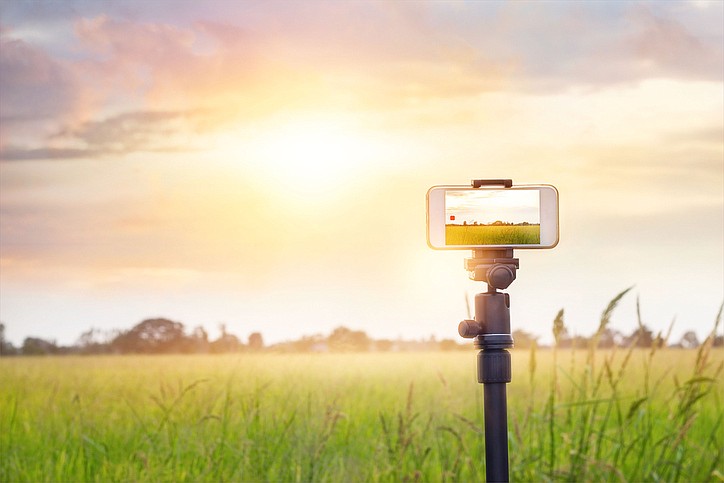Tips for photographing the solar eclipse with a smarthphone
* Use a solar filter or eclipse glasses in front of the lens.* Do not zoom in.* Turn off the flash.* Focus manually on the sun by touching the smarthphone’s screen, then slide your finger up or down to darken or lighten exposure.* Rather than trying to get a perfect photo of the eclipse, watch what is happening around you.* Take a time-lapse photo series of the scenery as the light dims.
WEST PALM BEACH, Fla. - Smartphones will no doubt be aimed at the heavens Monday in earnest attempts to capture the first total solar eclipse to sweep the U.S. coast-to-coast in 99 years.
But like the fuzzy photos of glowing orbs that flood social media the day after a full moon, a solar eclipse, even of grand proportion, can be an elusive capture for a plucky, but tiny, smartphone camera.
"The good news is you are not going to burn your camera up by taking a picture of the eclipse," says Andrew Symes, an astrophotographer who Apple is referencing for questions about taking smartphone pictures of the eclipse. "The bad news is you are probably not going to get a good photo by just holding the phone up and snapping a picture."
Symes, of Ottawa, Canada, started using an iPhone 4S in 2011 to take photos of the night sky. He has captured Jupiter and its moons, Saturn, the sun and even Mercury - the smallest planet in the solar system.
His pictures are captured through the lens of a telescope, but he has a few tips on taking pictures of this month's historic eclipse with a naked smartphone sans telescope.
While a solar filter isn't necessary to photograph the eclipse with a smartphone, it will make for a better picture than just pointing the phone at the sun to create an "overexposed, yellowish blob," Symes says.
"If you hold eclipse glasses over the iPhone camera lens, that will dim the sun enough that it actually does look like a very small circle and you should be able to see the darkness of the moon as it crosses in front of it," Symes says. "Don't zoom in. You can crop the image later."
It's also important to lock the focus by touching the image of the sun on the phone's screen and holding it a second.
For people using telephoto adapters with their smartphone, Symes recommends using a solar filter or risk damaging the camera. Also, anyone using a telescope to take a picture of the eclipse needs a special solar filter.
"You need to block out all that light before it gets to your telescope or you could literally burn your eyes, Symes says.
For people in the path of totality, the only time it is safe to take off your eclipse glasses is when the moon fully covers the sun and just the glowing halo, or corona, of the sun can be seen. This is also the time to take smartphone photos without a solar filter or from behind eclipse glasses.
For those not in the path of totality, it is never safe to look at the eclipse without eclipse glasses.
"You only have two-and-a-half minutes or less to take photos of the eclipse, but don't forget to take some photos of the surroundings, what people are doing," says Sten Odenwald, a NASA scientist. "This will require low-light-level photography on your smartphone."
